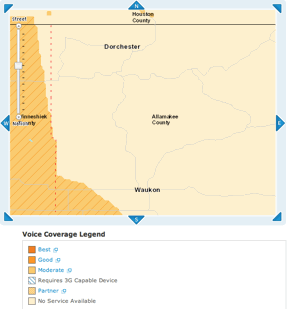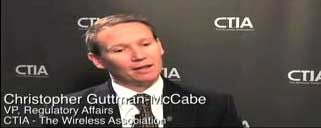Comments in Cellphone/Prison Rulemaking (Docket 13-111)

Carl Lackl, Jr. (l) a Baltimore witness murdered as a result of a prison cell phone call.
Capt. Robert Johnson (r) South Carolina Department of Corrections, shot 6 times
at his home as a result of a prison cell phone call.
Your blogger has filed comments in Docket 13-111, which deals with “Promoting Technological Solutions to Combat Contraband Wireless Device Use in Correctional Faciliteis (sic)”. These comments were on behalf of MSS, not for any previous or current client and were made solely in the public interest. At 34 pages without attachments they happen to be the longest filing to date, although length does not necessarily imply quality or success. So far, the docket file has 43 items from outside FCC, mostly comments
The comments start with the above photos of Carl Lackl, Jr. and Captain Robert Johnson to remind readers that unlike virtually all FCC proceedings, this one does not deal with just economic benefits for one party versus another, but rather an unintended side effect of today’s CMRS technology in which real people die.
The comments review the unusual history of this proceeding including multiple petitions that sat in “petition limbo” for years even though some were from local governments and even though Section 1.403 of the FCC’s own rules requires that such petitions be assigned a file number and “promptly “ be included on a public notice for comment. In particular, the MSS comments include as attachments parts of the 2010 GTL petition that have never been commented on that deal with mandates needed to make managed access effective in all cases and which give alternative theories that would permit the Commission the discretion to authorize jamming in special cases if it was found to be in the public interest. Cellular interests cling to an interpretation of Section 333 of the Communications Act that has never been endorsed by the FCC or a court that says FCC lacks jurisdiction to authorize jamming but NTIA has such jurisdiction for federal users.
MSS urges the Commission to require all CMRS carriers to provide the spectrum under reasonable terms needed for MAS if requested by a prison. While today’s major carriers do so and promise to pressure smaller carriers, the reality is no one knows what firms will be CMRS carriers in rural areas next year since many spectrum auctions are pending to implement the spectrum demands of cellular interests. MSS also urges the Commission to require mandatory a priori coordination of all technical changes to the cellular network near prisons with MAS systems in order to maintain the functioning of MAS throughout the network evolution.
The comments emphasize that cell phones in prisons is a complex issue and that no “magic bullet” is likely to be found that eliminates the whole problem without causing side effects. While cellular interests claim jamming would inevitably cause “overjamming” that impacts users outside prisons (see CTIA video) , their preferred “managed access systems”/MAS will also cause excess coverage in prisons that do not have an adequate buffer from publicly accessible areas, such as at Sing Sing Correctional Facility in New York.
The comments raise the issue of financing MAS or other costly solutions and points out the interrelationship between this issue and the ongoing WC Docket No. 12-375 which seeks to reduce the present high cost of inmate communication services (ICS). While cellular interests would like the state and local governments to shoulder the financial cost of exotic technology in the hostile environment of prisons, MSS points out that the carriers themselves are in a better position to handle the financial and technical burdens than prison administrators. Shifting the cost to ICS operators, as California is trying to do, may seem tempting but the inmates are truly a “captive audience” who have already been overcharged for years for telecom services. Increased contact with families can decrease recidivism -- whose costs to society and the economy dwarfs the sums involved in this issue.
The MSS comments also propose a new approach to handle contraband cell phones in prisons that deals with the special case of rural maximum security prisons - actually the location of most of the serious problems since dated suburban maximum security facilities like Sing Sing are rare now. The new approach is called “geolocation-based denial”/GBD and builds on the existing E-911 program. It is proposed that prison with a 300m buffer between secure areas and areas accessible to the general public be allowed to request the Commission to remove the secure area from the coverage of all CMRS carriers. The carriers

Reply comments are still open in this proceeding. vox populi, vox dei
Current ATT coverage in rural Iowa
UPDATE
FCC’s Australian counterpart, Australian Communications and Media Authority/ACMA, has a new blog entry on “Removing jammers from the streets”. Included is the above video. ACMA says
Targeting prohibited devices has demanded an agile approach to compliance. Our activities also include preventative (education/awareness) and enforcement measures. This has helped to restrict the supply of jammers to the local market, forcing consumers to turn to online sources for devices that are often seized before reaching their destination.
The Australian penalties for unauthorized jammer marketing and use are much greater than in the US. For example the blog says:
There could be more substantial penalties, such as receiving a five-year prison sentence or penalty of up to $850,000 (5,000 penalty units) for causing substantial interference to radiocommunications used by emergency services (such as fire, police and ambulance) and other special organisations. And these aren’t the only penalties that could apply.
Note from the video that ACMA, unlike the US cellular interests, is clearly able to differentiate between authorized controlled jamming in prisons and unauthorized jamming that endangers public safety. Compare this with the following CTIA video which vilified both prison jamming and unauthorized jamming based on alleged experience in Brazil.

CTIA interview on prison jamming (June 2009)
UPDATE
Mr. Guttman-McCabe no longer works at CTIA and the interview on prison jamming discussed above has magically disappeared from the CTIA website. But there isn sign that CTIA's policy has changed at all.



![Validate my RSS feed [Valid RSS]](valid-rss-rogers.png)

